Abstract
Heparin-induced thrombocytopenia/thrombosis (HITP) is thought to be mediated by immunoglobulins that activate platelets in the presence of pharmacologic concentrations of heparin, but the molecular basis for this relatively common and often serious complication of heparin therapy has not been established. We found that plasma from each of 12 patients with HITP contained high titer (> or = 1:200) antibodies that reacted with immobilized complexes of heparin and platelet factor 4 (PF4), a heparin-binding protein contained in platelet alpha-granules. Recombinant human PF4 behaved similarly to PF4 isolated from platelets in this assay system. Complexes formed at an apparent heparin/PF4 molecular ratio of approximately 1:2 (fresh heparin) and approximately 1:12 (outdated heparin) were most effective in binding antibody. Immune complexes consisting of PF4, heparin, and antibody reacted with resting platelets; this interaction was inhibited by a monoclonal antibody specific for the Fc gamma RII receptor and by excess heparin. Human umbilical vein endothelial cells, known to express heparin-like glycosaminoglycan molecules on their surface, were recognized by antibody in the presence of PF4 alone; this reaction was inhibited by excess heparin, but not by anti-Fc gamma RII. Antibodies reactive with heparin/PF4 were not found in normal plasma, but IgG and IgM antibodies were detected at dilutions of 1:10 (IgG) and 1:50 (IgM) in 3 of 50 patients (6%) with other types of immune thrombocytopenia. These findings indicate that antibodies associated with HITP react with PF4 complexed with heparin in solution or with glycosaminoglycan molecules on the surface of endothelial cells and provide the basis for a new hypothesis to explain the development of thrombocytopenia with thrombosis or disseminated intravascular coagulation in patients sensitive to heparin.
Full text
PDF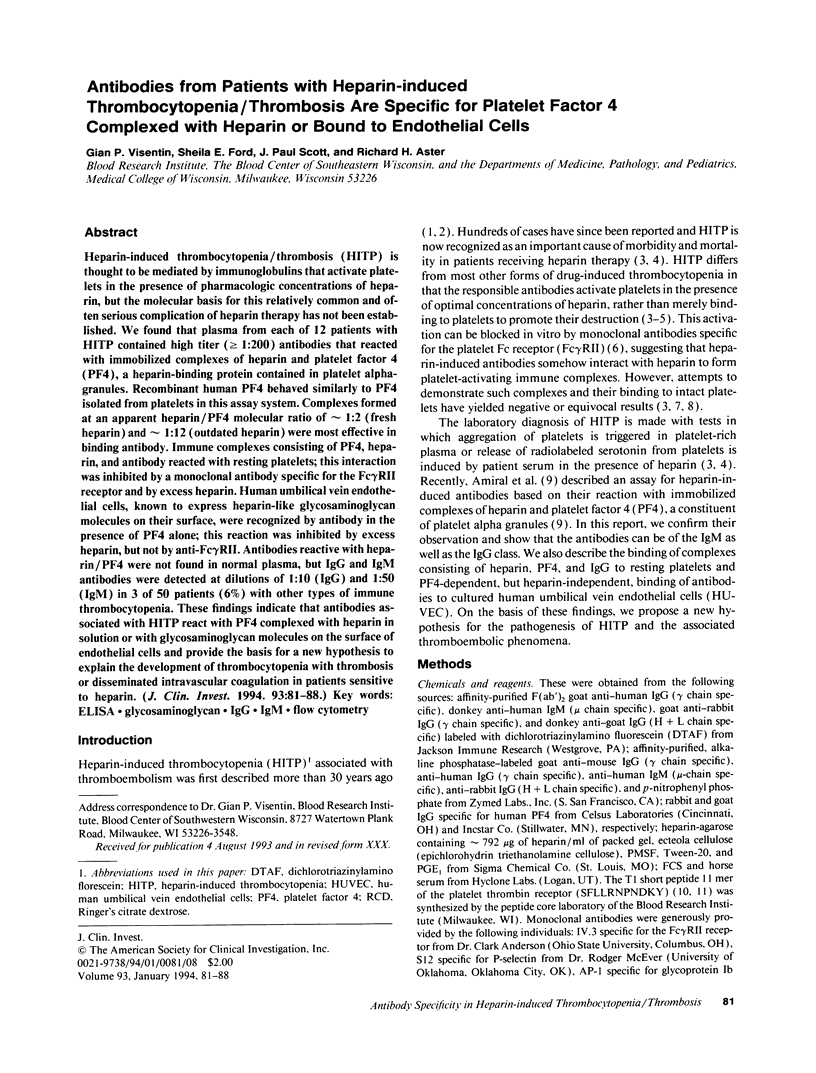
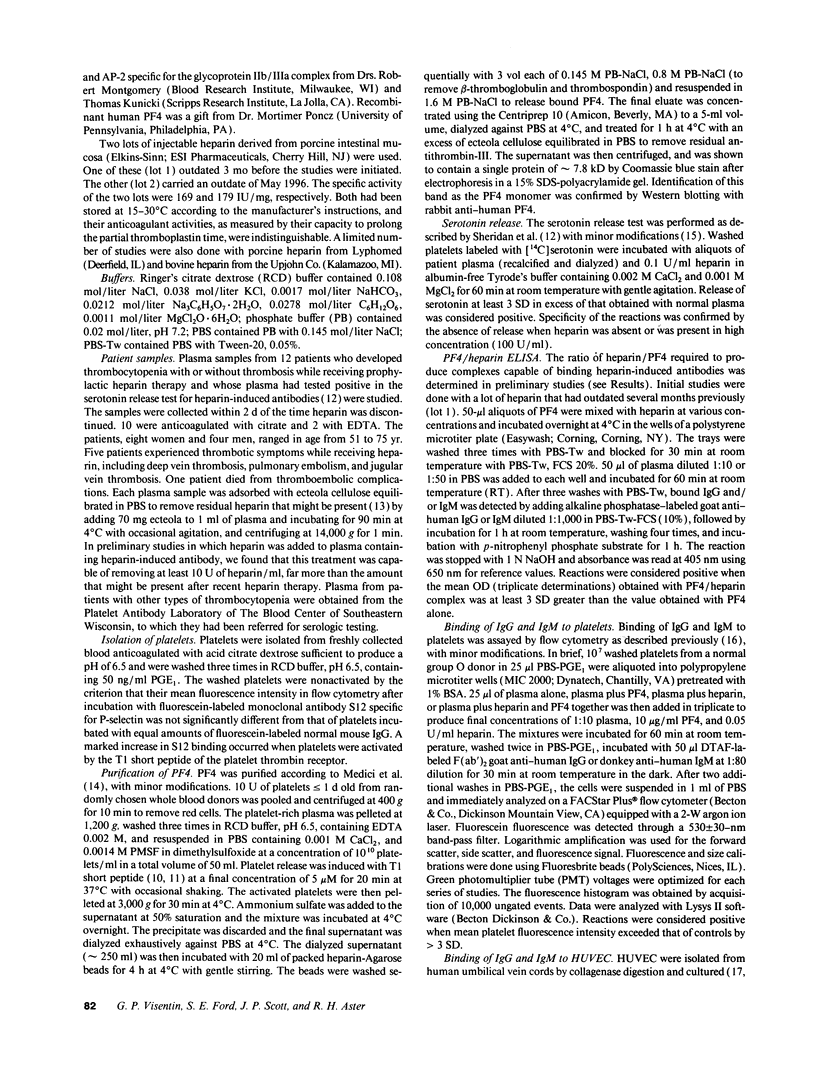
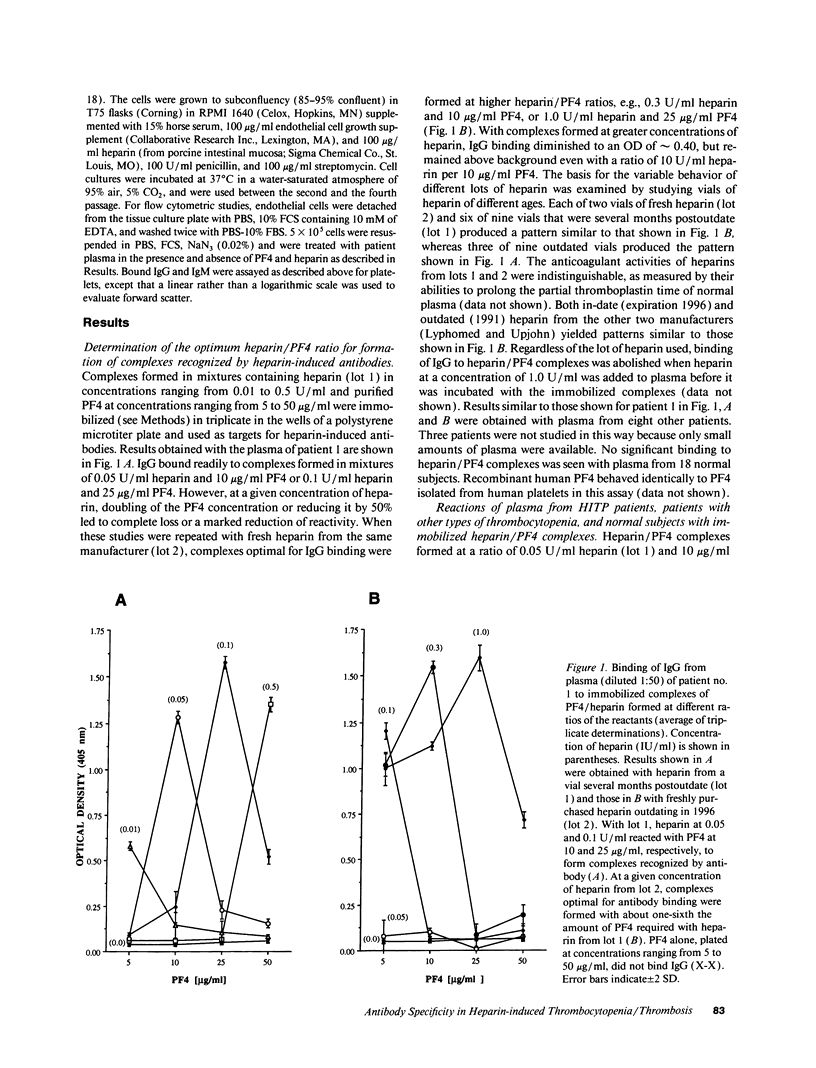
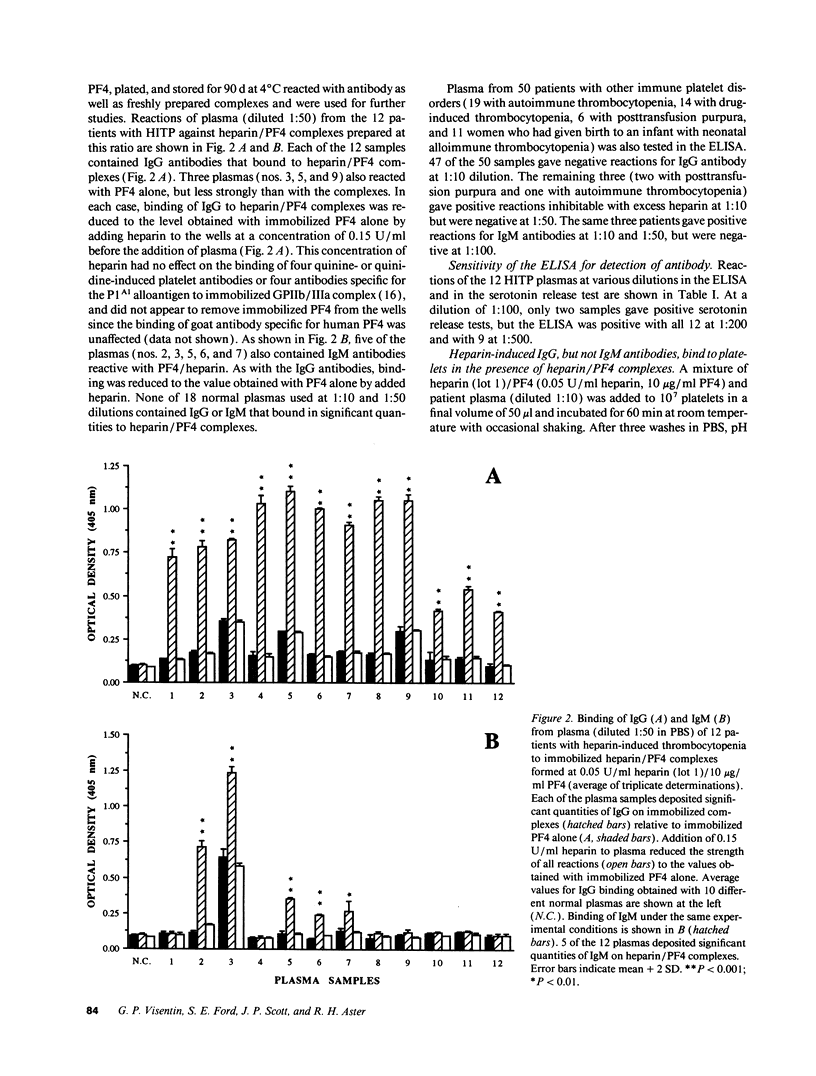
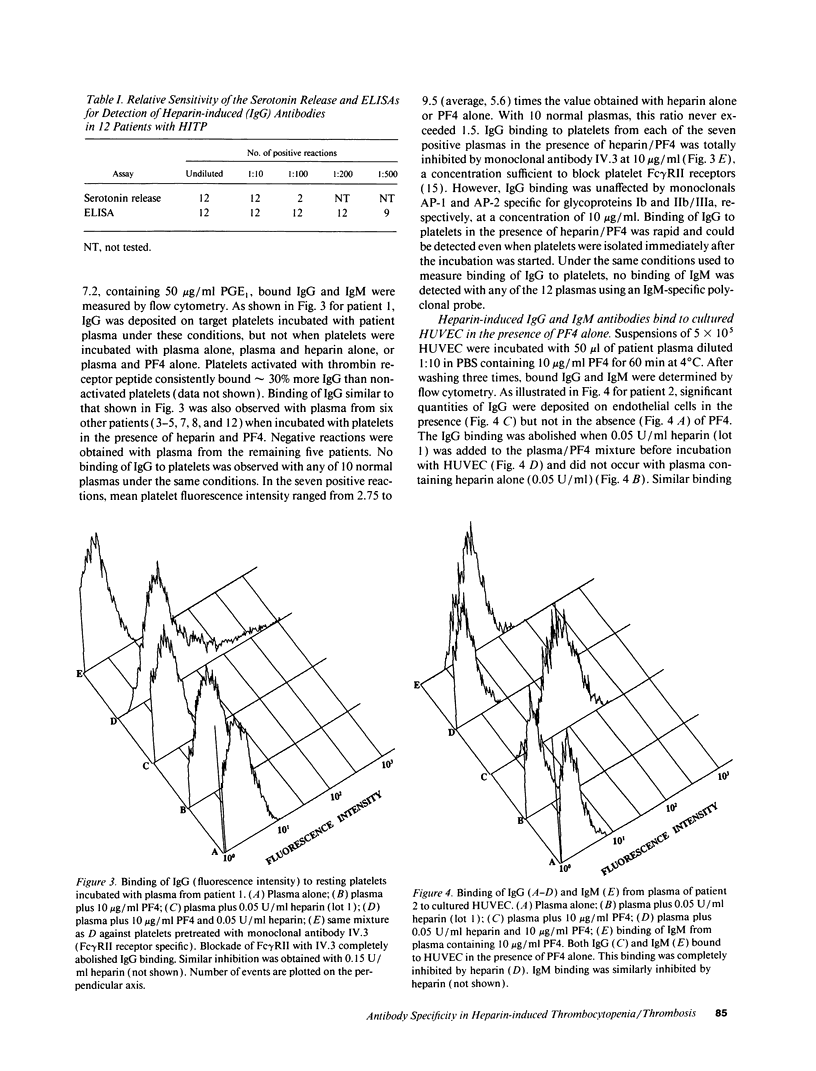
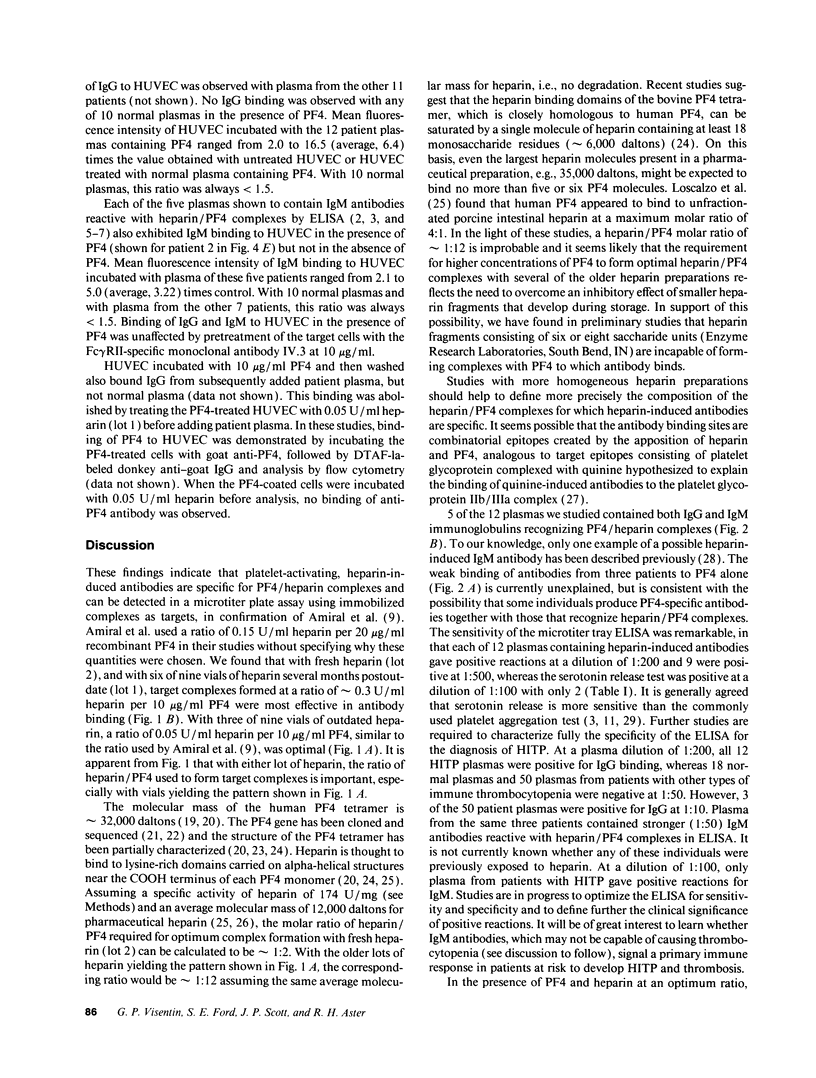
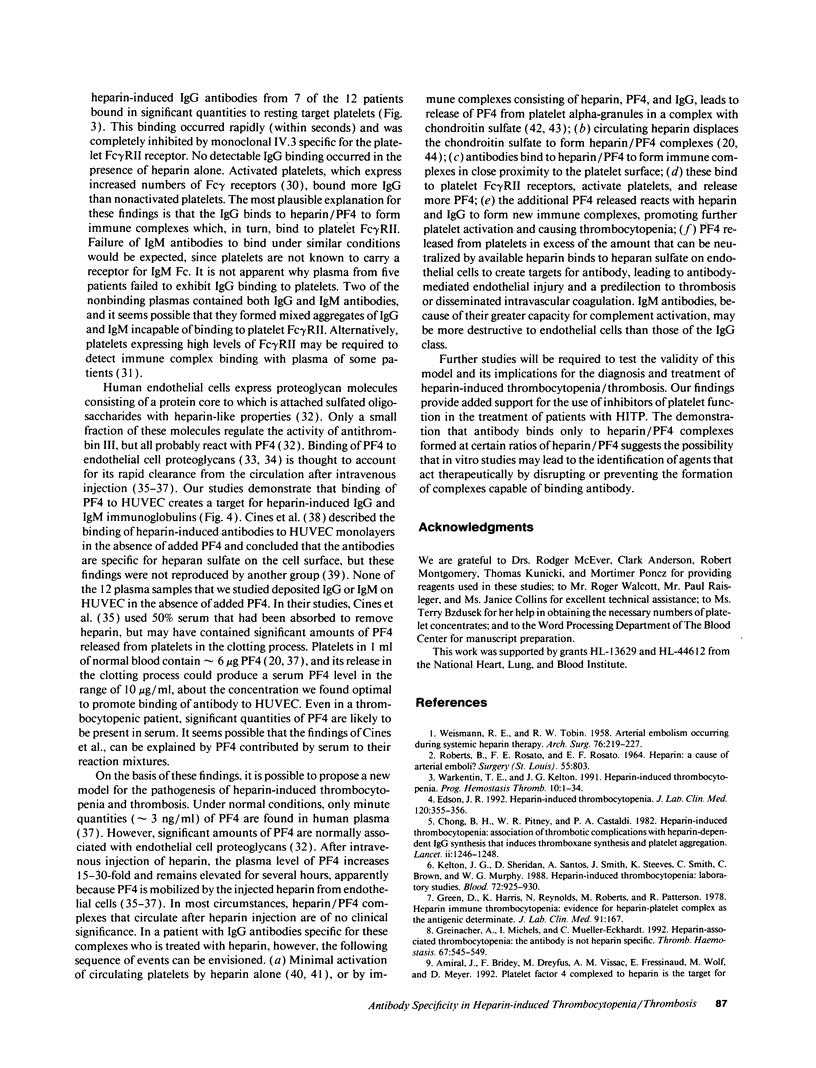
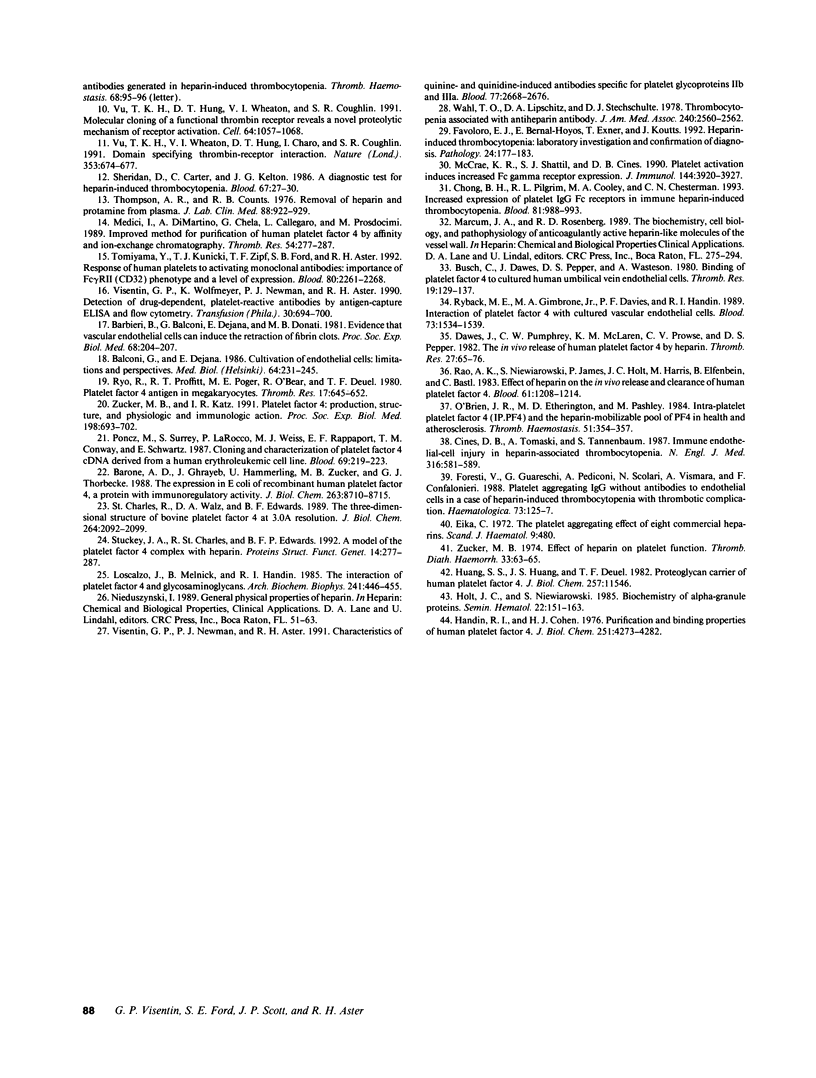
Selected References
These references are in PubMed. This may not be the complete list of references from this article.
- Amiral J., Bridey F., Dreyfus M., Vissoc A. M., Fressinaud E., Wolf M., Meyer D. Platelet factor 4 complexed to heparin is the target for antibodies generated in heparin-induced thrombocytopenia. Thromb Haemost. 1992 Jul 6;68(1):95–96. [PubMed] [Google Scholar]
- Balconi G., Dejana E. Cultivation of endothelial cells: limitations and perspectives. Med Biol. 1986;64(5):231–245. [PubMed] [Google Scholar]
- Barbieri B., Balconi G., Dejana E., Donati M. B. Evidence that vascular endothelial cells can induce the retraction of fibrin clots. Proc Soc Exp Biol Med. 1981 Nov;168(2):204–207. doi: 10.3181/00379727-168-41260. [DOI] [PubMed] [Google Scholar]
- Barone A. D., Ghrayeb J., Hammerling U., Zucker M. B., Thorbecke G. J. The expression in Escherichia coli of recombinant human platelet factor 4, a protein with immunoregulatory activity. J Biol Chem. 1988 Jun 25;263(18):8710–8715. [PubMed] [Google Scholar]
- Busch C., Dawes J., Pepper D. S., Wasteson A. Binding of platelet factor 4 to cultured human umbilical vein endothelial cells. Thromb Res. 1980 Jul 1;19(1-2):129–137. doi: 10.1016/0049-3848(80)90412-0. [DOI] [PubMed] [Google Scholar]
- Chong B. H., Pilgrim R. L., Cooley M. A., Chesterman C. N. Increased expression of platelet IgG Fc receptors in immune heparin-induced thrombocytopenia. Blood. 1993 Feb 15;81(4):988–993. [PubMed] [Google Scholar]
- Chong B. H., Pitney W. R., Castaldi P. A. Heparin-induced thrombocytopenia: association of thrombotic complications with heparin-dependent IgG antibody that induces thromboxane synthesis in platelet aggregation. Lancet. 1982 Dec 4;2(8310):1246–1249. doi: 10.1016/s0140-6736(82)90106-4. [DOI] [PubMed] [Google Scholar]
- Cines D. B., Tomaski A., Tannenbaum S. Immune endothelial-cell injury in heparin-associated thrombocytopenia. N Engl J Med. 1987 Mar 5;316(10):581–589. doi: 10.1056/NEJM198703053161004. [DOI] [PubMed] [Google Scholar]
- Dawes J., Pumphrey C. W., McLaren K. M., Prowse C. V., Pepper D. S. The in vivo release of human platelet factor 4 by heparin. Thromb Res. 1982 Jul 1;27(1):65–76. doi: 10.1016/0049-3848(82)90279-1. [DOI] [PubMed] [Google Scholar]
- Edson J. R. Heparin-induced thrombocytopenia. J Lab Clin Med. 1992 Sep;120(3):355–356. [PubMed] [Google Scholar]
- Eika C. The platelet aggregating effect of eight commercial heparins. Scand J Haematol. 1972;9(5):480–482. doi: 10.1111/j.1600-0609.1972.tb00973.x. [DOI] [PubMed] [Google Scholar]
- Favaloro E. J., Bernal-Hoyos E., Exner T., Koutts J. Heparin-induced thrombocytopenia: laboratory investigation and confirmation of diagnosis. Pathology. 1992 Jul;24(3):177–183. doi: 10.3109/00313029209063169. [DOI] [PubMed] [Google Scholar]
- Foresti V., Guareschi G., Pediconi A., Scolari N., Vismara A., Confalonieri F. Platelet aggregating IgG without antibodies to endothelial cells in a case of heparin-induced thrombocytopenia with thrombotic complication. Haematologica. 1988 Mar-Apr;73(2):125–127. [PubMed] [Google Scholar]
- Green D., Harris K., Reynolds N., Roberts M., Patterson R. Heparin immune thrombocytopenia: evidence for a heparin-platelet complex as the antigenic determinant. J Lab Clin Med. 1978 Jan;91(1):167–175. [PubMed] [Google Scholar]
- Greinacher A., Michels I., Mueller-Eckhardt C. Heparin-associated thrombocytopenia: the antibody is not heparin specific. Thromb Haemost. 1992 May 4;67(5):545–549. [PubMed] [Google Scholar]
- Handin R. I., Cohen H. J. Purification and binding properties of human platelet factor four. J Biol Chem. 1976 Jul 25;251(14):4273–4282. [PubMed] [Google Scholar]
- Holt J. C., Niewiarowski S. Biochemistry of alpha granule proteins. Semin Hematol. 1985 Apr;22(2):151–163. [PubMed] [Google Scholar]
- Huang S. S., Huang J. S., Deuel T. F. Proteoglycan carrier of human platelet factor 4. Isolation and characterization. J Biol Chem. 1982 Oct 10;257(19):11546–11550. [PubMed] [Google Scholar]
- Kelton J. G., Sheridan D., Santos A., Smith J., Steeves K., Smith C., Brown C., Murphy W. G. Heparin-induced thrombocytopenia: laboratory studies. Blood. 1988 Sep;72(3):925–930. [PubMed] [Google Scholar]
- Loscalzo J., Melnick B., Handin R. I. The interaction of platelet factor four and glycosaminoglycans. Arch Biochem Biophys. 1985 Jul;240(1):446–455. doi: 10.1016/0003-9861(85)90049-9. [DOI] [PubMed] [Google Scholar]
- McCrae K. R., Shattil S. J., Cines D. B. Platelet activation induces increased Fc gamma receptor expression. J Immunol. 1990 May 15;144(10):3920–3927. [PubMed] [Google Scholar]
- Medici I., Di Martino A., Cella G., Callegaro L., Prosdocimi M. Improved method for purification of human platelet factor 4 by affinity and ion-exchange chromatography. Thromb Res. 1989 May 15;54(4):277–287. doi: 10.1016/0049-3848(89)90086-8. [DOI] [PubMed] [Google Scholar]
- O'Brien J. R., Etherington M. D., Pashley M. Intra-platelet platelet factor 4 (IP.PF4) and the heparin-mobilisable pool of PF4 in health and atherosclerosis. Thromb Haemost. 1984 Jul 29;51(3):354–357. [PubMed] [Google Scholar]
- Poncz M., Surrey S., LaRocco P., Weiss M. J., Rappaport E. F., Conway T. M., Schwartz E. Cloning and characterization of platelet factor 4 cDNA derived from a human erythroleukemic cell line. Blood. 1987 Jan;69(1):219–223. [PubMed] [Google Scholar]
- ROBERTS B., ROSATO F. E., ROSATO E. F. HEPARIN--A CAUSE OF ARTERIAL EMBOLI? Surgery. 1964 Jun;55:803–808. [PubMed] [Google Scholar]
- Rao A. K., Niewiarowski S., James P., Holt J. C., Harris M., Elfenbein B., Bastl C. Effect of heparin on the in vivo release and clearance of human platelet factor 4. Blood. 1983 Jun;61(6):1208–1214. [PubMed] [Google Scholar]
- Rybak M. E., Gimbrone M. A., Jr, Davies P. F., Handin R. I. Interaction of platelet factor four with cultured vascular endothelial cells. Blood. 1989 May 1;73(6):1534–1539. [PubMed] [Google Scholar]
- Ryo R., Proffitt R. T., Poger M. E., O'Bear R., Deuel T. F. Platelet factor 4 antigen in megakaryocytes. Thromb Res. 1980 Mar 1;17(5):645–652. doi: 10.1016/0049-3848(80)90367-9. [DOI] [PubMed] [Google Scholar]
- Sheridan D., Carter C., Kelton J. G. A diagnostic test for heparin-induced thrombocytopenia. Blood. 1986 Jan;67(1):27–30. [PubMed] [Google Scholar]
- St Charles R., Walz D. A., Edwards B. F. The three-dimensional structure of bovine platelet factor 4 at 3.0-A resolution. J Biol Chem. 1989 Feb 5;264(4):2092–2099. [PubMed] [Google Scholar]
- Stuckey J. A., St Charles R., Edwards B. F. A model of the platelet factor 4 complex with heparin. Proteins. 1992 Oct;14(2):277–287. doi: 10.1002/prot.340140213. [DOI] [PubMed] [Google Scholar]
- Thompson A. R., Counts R. B. Removal of heparin and protamine from plasma. J Lab Clin Med. 1976 Dec;88(6):922–929. [PubMed] [Google Scholar]
- Tomiyama Y., Kunicki T. J., Zipf T. F., Ford S. B., Aster R. H. Response of human platelets to activating monoclonal antibodies: importance of Fc gamma RII (CD32) phenotype and level of expression. Blood. 1992 Nov 1;80(9):2261–2268. [PubMed] [Google Scholar]
- Visentin G. P., Newman P. J., Aster R. H. Characteristics of quinine- and quinidine-induced antibodies specific for platelet glycoproteins IIb and IIIa. Blood. 1991 Jun 15;77(12):2668–2676. [PubMed] [Google Scholar]
- Visentin G. P., Wolfmeyer K., Newman P. J., Aster R. H. Detection of drug-dependent, platelet-reactive antibodies by antigen-capture ELISA and flow cytometry. Transfusion. 1990 Oct;30(8):694–700. doi: 10.1046/j.1537-2995.1990.30891020326.x. [DOI] [PubMed] [Google Scholar]
- Vu T. K., Hung D. T., Wheaton V. I., Coughlin S. R. Molecular cloning of a functional thrombin receptor reveals a novel proteolytic mechanism of receptor activation. Cell. 1991 Mar 22;64(6):1057–1068. doi: 10.1016/0092-8674(91)90261-v. [DOI] [PubMed] [Google Scholar]
- Vu T. K., Wheaton V. I., Hung D. T., Charo I., Coughlin S. R. Domains specifying thrombin-receptor interaction. Nature. 1991 Oct 17;353(6345):674–677. doi: 10.1038/353674a0. [DOI] [PubMed] [Google Scholar]
- WEISMANN R. E., TOBIN R. W. Arterial embolism occurring during systemic heparin therapy. AMA Arch Surg. 1958 Feb;76(2):219–227. doi: 10.1001/archsurg.1958.01280200041005. [DOI] [PubMed] [Google Scholar]
- Wahl T. O., Lipschitz D. A., Stechschulte D. J. Thrombocytopenia associated with antiheparin antibody. JAMA. 1978 Dec 1;240(23):2560–2562. [PubMed] [Google Scholar]
- Warkentin T. E., Kelton J. G. Heparin-induced thrombocytopenia. Prog Hemost Thromb. 1991;10:1–34. [PubMed] [Google Scholar]
- Zucker M. B. Effect of heparin on platelet function. Thromb Diath Haemorrh. 1975 Feb 28;33(1):63–65. [PubMed] [Google Scholar]
- Zucker M. B., Katz I. R. Platelet factor 4: production, structure, and physiologic and immunologic action. Proc Soc Exp Biol Med. 1991 Nov;198(2):693–702. doi: 10.3181/00379727-198-43309. [DOI] [PubMed] [Google Scholar]


